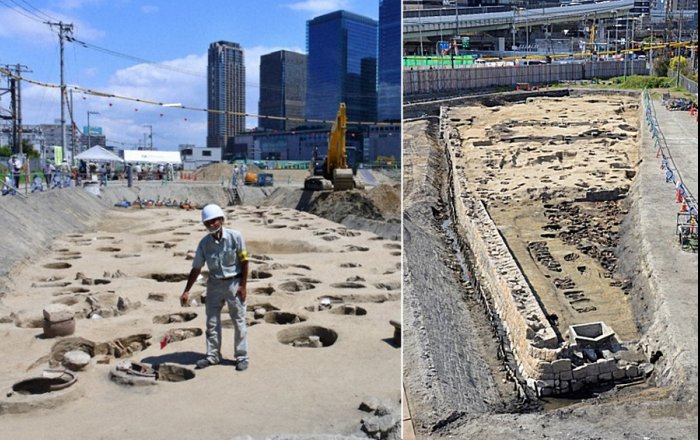Conny Waters - AncientPages.com - The skeletal remains of more than 1,500 people originating from the Edo (1603-1868) to Meiji (1868-1912) periods have been found at a site north of JR Osaka Station earmarked for redevelopment, according to local authorities. Osaka is one of Japan’s largest cities situated on the south-central coast of the island of Honshu.
The graves – belonging to common people - were found during an excavation survey on the former site of the "Umedahaka" or Umeda Graves, one of seven historically significant graveyards in Osaka.
It is the largest single discovery of burial remains in the city, and is an uncommon find even nationally.
The excavation survey is carried out by the Osaka Municipal Board of Education and the Osaka City Cultural Properties Association and as the researchers say, it is the largest single discovery of burial remains in the city and is an uncommon find even nationally.
The graves appear to have belonged to common people, and their bones will be investigated and details on the funereal culture and living style of the time analyzed, reports The Mainichi.
The investigation of the area started September 2019 and diggings – organized by managed by the Osaka Municipal Board of Education and the Osaka City Cultural Properties Association - revealed that some of the dead within the grounds had been buried in wooden tubs, square wooden coffins or in funeral urns, while others were buried after cremation.
There were many areas there where people were simply buried under the soil, or multiple individuals were laid to rest in the same hole.
The excavation uncovered many burial items that include beads, six mon coins, traditional smoking pipes, earthen dolls, gold coins, and other goods. The results of the most recent survey reportedly show that the gravesite was in use from around the end of the Edo period to about the third decade of the Meiji era.
It has been speculated that perhaps this section was used to bury people who had all died at once from diseases, among other things.
"There are numerous examples of Edo period gravesite surveys in Tokyo, but an investigation of this scale is very uncommon,” Professor Shinichi Sagawa, a member of Osaka Ohtani University's Department of History and Culture and an expert in burial archeology, said.
“That the graves were concentrated together is characteristic of cities, and for such a large site to have been developed over a short period of time suggests this couldn't be a farming village."
The buried appear to have been ordinary people living in the downtown area around Osaka Castle and surrounding neighborhoods. The results of bone analysis from the most recent survey have yet to be released, but the earlier analysis showed that the average age range of those buried was their 30s, and there were reportedly many children's remains found, too.
It was also found that lesions primarily concentrated on the limbs of the deceased were visible on close to 30% of buried individuals, and it's possible some of them suffered from syphilis and bone tumors.
The current excavation survey will continue until the end of August, and the area is not open to the general public.
Written by Conny Waters - AncientPages.com Staff Writer
